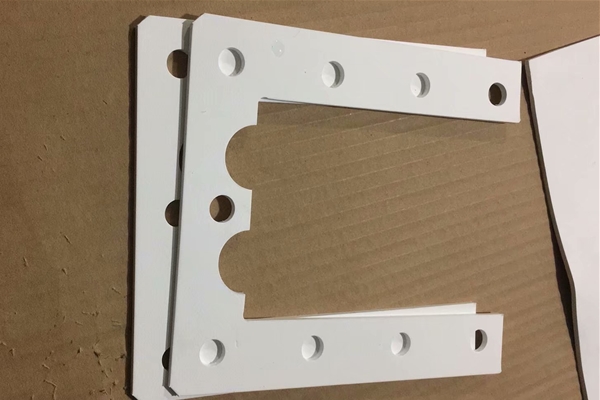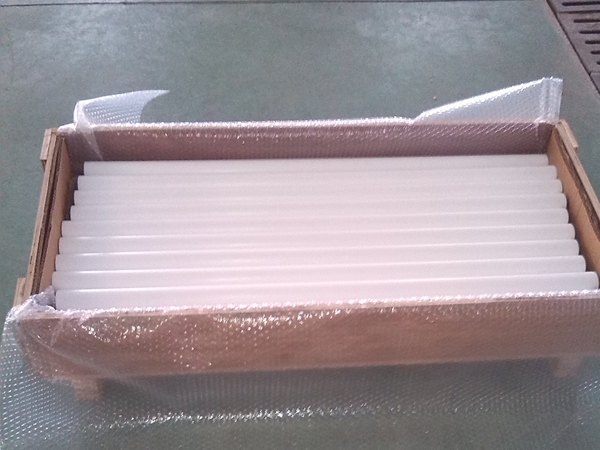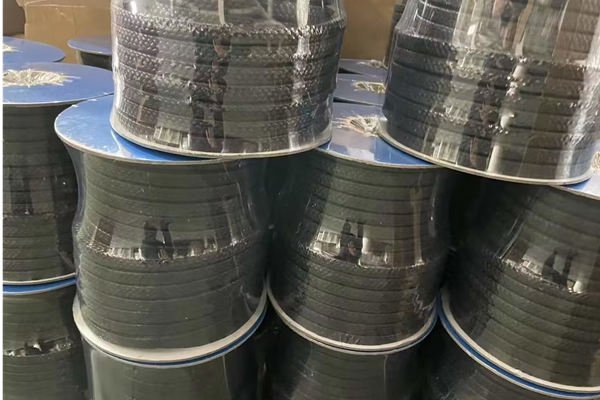Expanded PTFE gasket tape is a sealing material offered as continuous, white, 100% ePTFE tape. It is known for its excellent flexibility, compression resilience, and ease of installation, making it a popular choice in various industries, including chemicals, pharmaceuticals, petrochemicals, food and beverage, electronics, power generation, metallurgy, and the marine industry. In current practice, many soft expanded PTFE gasket tapes are made from 100% PTFE only. Such types of expanded PTFE seal tapes tend to have lower strength, weaker corrosion resistance, and are prone to aging.
Another approach is to first produce an Expanded PTFE sheet with improved anti-creep properties and then fabricate expanded PTFE gaskets from that sheet. However, these ePTFE sheets often show insufficient elasticity and strength.
This disclosure provides an Expanded PTFE seal tape with high strength, good corrosion resistance, excellent flexibility, and strong compression-rebound. The tape features a low coefficient of friction, reliable sealing, and is resistant to hydrolysis and hardening, allowing for use from -300 °C to +310 °C. A convenient preparation method is also provided; tapes made by this method exhibit excellent softness.
Composition (by parts by weight)
The ePTFE gasket tape is composed of the following ingredients :
PTFE
FKM fluoroelastomer (fluororubber)
Phenolic-epoxy resin
Vulcanizing agent (composed of 2 parts PDM vulcanizing agent + 1 part sulfur + 1 part silica; parts by weight)
Reinforcing agent: silica (SiO₂)
Manufacturing Method
Step A — Mixing
1. Weigh the following materials: PTFE, fluoroelastomer, phenolic-epoxy resin, vulcanizing agent, and reinforcing agent.
2. Mix the components uniformly:
– First, mix at 60 rpm for 6 minutes.
– Then, increase the speed and mix at 250 rpm for 20 minutes.
Step B — Molding & Curing
1. Primary Pressing:
– Temperature: 355 °C
– Pressure: 18–20 MPa
– Press for 15 minutes, then hold (dwell) for 2 hours.
2. Secondary Pressing:
– Temperature: 250 °C
– Pressure: 15 MPa
– Press for 10 minutes.
3. Allow the material to cool in air to ambient temperature.
This process produces the finished ePTFE gasket tape
Advantages
High strength and good corrosion resistance
Excellent flexibility with strong compression set recovery
Low friction and tight sealing performance
Non-hydrolyzing, non-hardening during service
Wide temperature capability: -300 °C to +310 °C
Process benefits: The two-stage mixing speeds enhance blend uniformity, while controlled temperature and pressure molding promote tighter molecular bonding among ingredients, thereby improving anti-fracture performance..
Detailed Examples (Implementation)
Example 1
Formulation (parts by weight):
PTFE 80, FKM 40, phenolic-epoxy 20, vulcanizing agent 10, reinforcing agent 5.
Mixing: 60 r/min for 6 min → 250 r/min for 20 min.
Molding: 355 °C @ 18–20 MPa, press 15 min + dwell 2 h → 250 °C @ 15 MPa, press 10 min → air cool.
Vulcanizing agent: 2 parts PDM + 1 part sulfur + 1 part silica.
Reinforcing agent: silica.
Performance indices:
Compression rebound: 30 %
Tensile strength: 18 MPa
Elongation at break: 180 %
Service temperature: -180 °C to +200 °C
Example 2
Formulation (parts by weight):
PTFE 100, FKM 50, phenolic-epoxy 25, vulcanizing agent 10, reinforcing agent 5.
Mixing: 60 r/min for 6 min → 250 r/min for 20 min.
Molding: 355 °C @ 18–20 MPa, press 15 min + dwell 2 h → 250 °C @ 15 MPa, press 10 min → air cool.
Vulcanizing agent: 2 parts PDM + 1 part sulfur + 1 part silica.
Reinforcing agent: silica.
Performance indices:
Compression rebound: 45 %
Tensile strength: 24 MPa
Elongation at break: 230 %
Service temperature: -300 °C to +310 °C
Example 3
Formulation (parts by weight):
PTFE 100, FKM 60, phenolic-epoxy 30, vulcanizing agent 15, reinforcing agent 15.
Mixing: 60 r/min for 6 min → 250 r/min for 20 min.
Molding: 355 °C @ 18–20 MPa, press 15 min + dwell 2 h → 250 °C @ 15 MPa, press 10 min → air cool.
Vulcanizing agent: 2 parts PDM + 1 part sulfur + 1 part silica.
Reinforcing agent: silica.
Performance indices:
Compression rebound: 15 %
Tensile strength: 16 MPa
Elongation at break: 120 %
Service temperature: -250 °C to +280 °C




